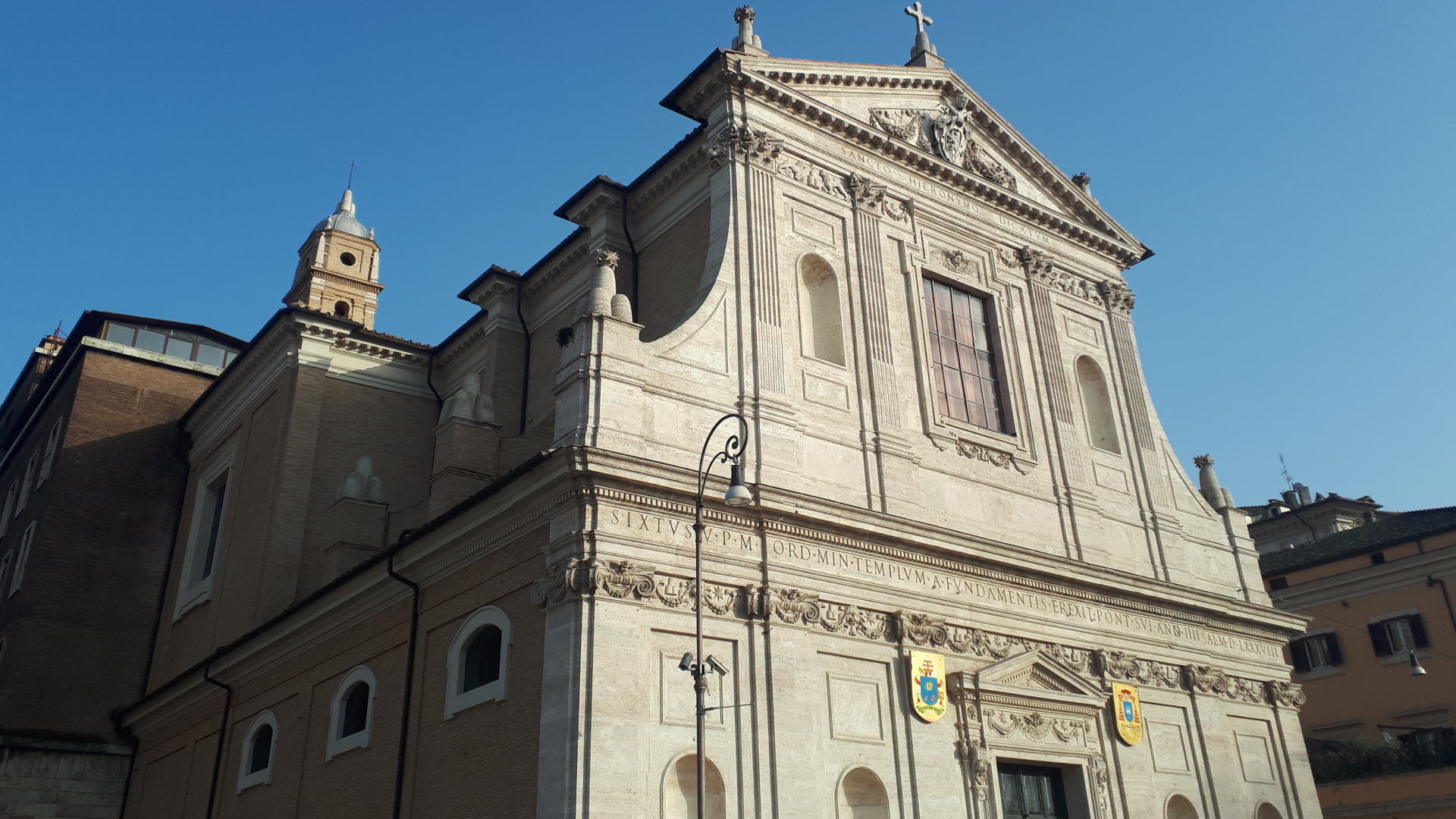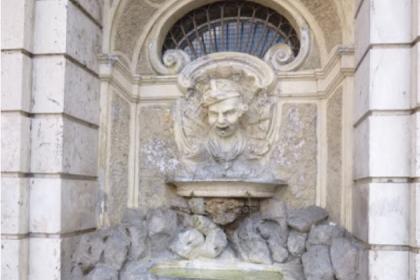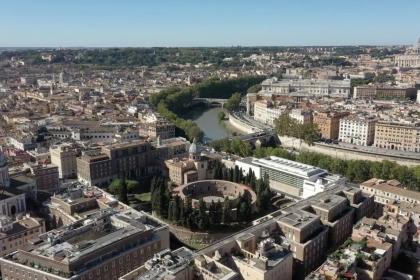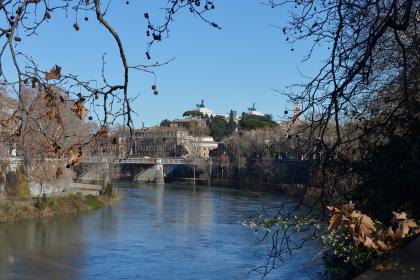
Previously konwn as San Girolamo degli Illirici or degli Schiavoni, it is the national church of Croatia and stands next to the church of San Rocco all’Augusteo and very close to the Ara Pacis, in a city area along the Tiber that changed radically with the demolition in 1890 of the port of Ripetta and then with the clearances around the Mausoleum of Augustus.
Since the 14th century, a community of Croatian expatriates had settled in this area. At the time, they were called Illyrians or Schiavoni (corruption of the term “Slavonians”) and they were organized in a confraternity. They obtained from Pope Nicholas V the small and ruined church of Santa Marina, with the permission to rebuild it and name it after their patron St. Jerome, one of the most important Fathers of the Western Church who had been born in Illyria, in a place called Stridon. Together with the church, the confraternity also built a hospice and a hostel for Croatian pilgrims and refugees from incursions by the Ottoman Turks into former Yugoslavia. A century later, Sixtus V had the church completely rebuilt for the Illyrian nation, to which the pope was deeply attached, endowing it with a rich pictorial decoration and precious furnishings and entrusting its construction to the architect Martino Longhi the Elder.
Martino Longhi the Elder was also the architect of the beautiful late Renaissance façade which is entirely in travertine and decorated on the friezes and between the capitals of the orders with swags and the pope’s emblems: lion’s masks, pears, mountains and stars. The entire external façade has unfortunately lost part of its monumentality with the demolition of the long access stairway following the raising of the road level at the end of the 19th century. The interior has a single nave with three chapels on each side and a false dome frescoed by Andrea Lilli (or Lilio), one of the greatest interpreters of the last Roman Mannerism, who also painted the frescoes of the presbytery in collaboration with other artists including Antonio Viviani.
Fountain of Clement XIV or della Botticella

 Condividi
Condividi
The Mausoleum of Augustus

 Condividi
Condividi
The river Tiber

According to legend, the history of Rome begins right here
Information
Holy Mass Schedule
Monday: 07.00, 07.30, 08.00, 18.30 (in Croatian)Tuesday: 07.00, 07.30, 08.00, 18.30 (in Croatian)Wednesday: 07.00, 07.30, 08.00, 18.30 (in Croatian)Thursday: 07.00, 07.30, 08.00, 18.30 (in Croatian)Friday: 07.00, 07.30, 08.00, 18.30 (in Croatian)Saturday and days before public holidays: 07.00, 07.30, 08.00, 18.30 (in Croatian)Sundays and public holidays: 10:30, 12:00, 18:00 (in Croatian)
Times are subject to change, so please always contact the Church.In July and August and the first half of September, summer hours are in effect, which will be announced.
 Condividi
Condividi
Location
To find out about all accessibility services, visit the Rome accessible section.











































